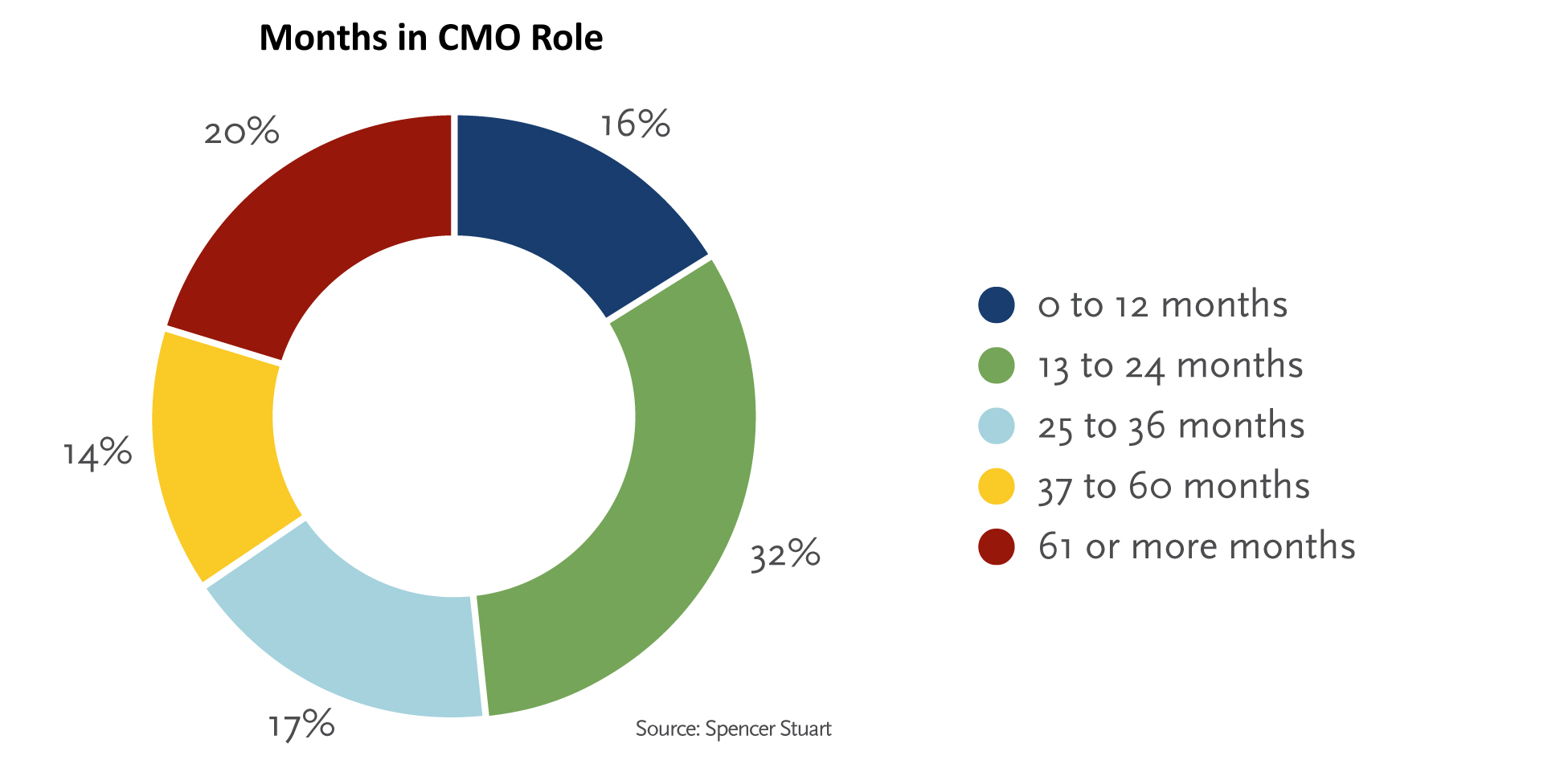April 10, 2017
What the Chicago Cubs Can Teach CMOs
On Nov. 2, 2016, the Chicago Cubs won the World Series. A great sports story, to be sure, but it goes beyond that. The team’s transformation from “lovable losers” to world champions can teach CMOs a great deal about thriving in today’s challenging business landscape.
Skeptical? Hear me out.
As we recently noted, CMO tenure has been trending downward for a while: CMOs are staying in their jobs six months less than they were just two years ago, for a drop of 13%. And those numbers pale in comparison to bigger-picture figures — only 34% of CMOs have been in the role for three or more years, compared to 49% in 2014.

The reason CMOs have a shorter tenure can largely be traced to one unsurprising word: digital. Our digital world is constantly evolving, and companies are fervently struggling to adapt to the new normal. What’s cutting edge today might be passé tomorrow, and that affects every area of a business. Today's marketing leaders have to stay abreast of the latest digital developments, which include everything from their media outreach to an intuitive website to helping integrate digital throughout the company’s culture.
In addition, many industries — from retailers to consumer-goods companies — are dealing with tougher business conditions. Sectors have seen profits slide as consumer shopping and eating habits have changed. So in an effort to keep up, CEOs are constantly changing players.
To truly thrive in this new environment, companies are looking for a “CMO+," or someone capable of leading beyond the typical marketing function. Today’s best leaders are naturally innovative and are able to bring a strategic mindset while striking a balance between the analytical and the job’s creative demands. Someone who doesn’t hone in on one area of expertise, but can also see the bigger picture.
Which brings me to the Chicago Cubs.
Not too long ago, the Cubs were a team that, while beloved, couldn’t quite reach the brass ring of a world championship. Despite a powerful brand, strong management and arguably the best ballpark in the world (Wrigley Field), they hadn’t hoisted the prized World Series trophy since 1908. The Cubs had come close, but in the end, it was always another team pouring the champagne at the end of the season.
Then new owners (the Ricketts family) took over, and things changed dramatically. Working with talented president of business operations Crane Kenney, the team wisely recruited Boston wunderkind Theo Epstein as president of baseball operations, and he completely overhauled the team’s approach. Epstein brought the team’s scouting department into the 21st century and began deploying sophisticated analytics. He traded many of the Cubs’ top players for future blue-chip prospects and improved the team’s lower-level facilities. He sought out any inefficiencies he could exploit and went after them. So that’s the strategic side.
On the creative side, Epstein helped the team shed its unfortunate lovable losers image. Instead, he created “The Cubs Way,” which helped instill a more positive self-image for the players. He hired a manager who brought baby animals and magicians to the team’s training facilities. The team completely redid its home clubhouse and added a dance party room, where the team could celebrate after victories.
Needless to say, the World Series trophy stands as proof of Epstein’s successful approach.
So a CMO would be wise to look to the Cubs as an example of how to create a winning environment. Be innovative and look beyond the daily minutia in front of you. At times, consider unorthodox methods as long as they are consistent with longer-term goals. And keep your eyes on the prize at all times.
It might not lead to you hoisting a massive trophy, but hey, it certainly won’t hurt.
Greg Welch is a member of Spencer Stuart's Consumer Practice and previously served as its global leader. He is also a member of the Marketing Officer and North American Board and CEO practices. Reach him via email and follow him on Twitter and LinkedIn.